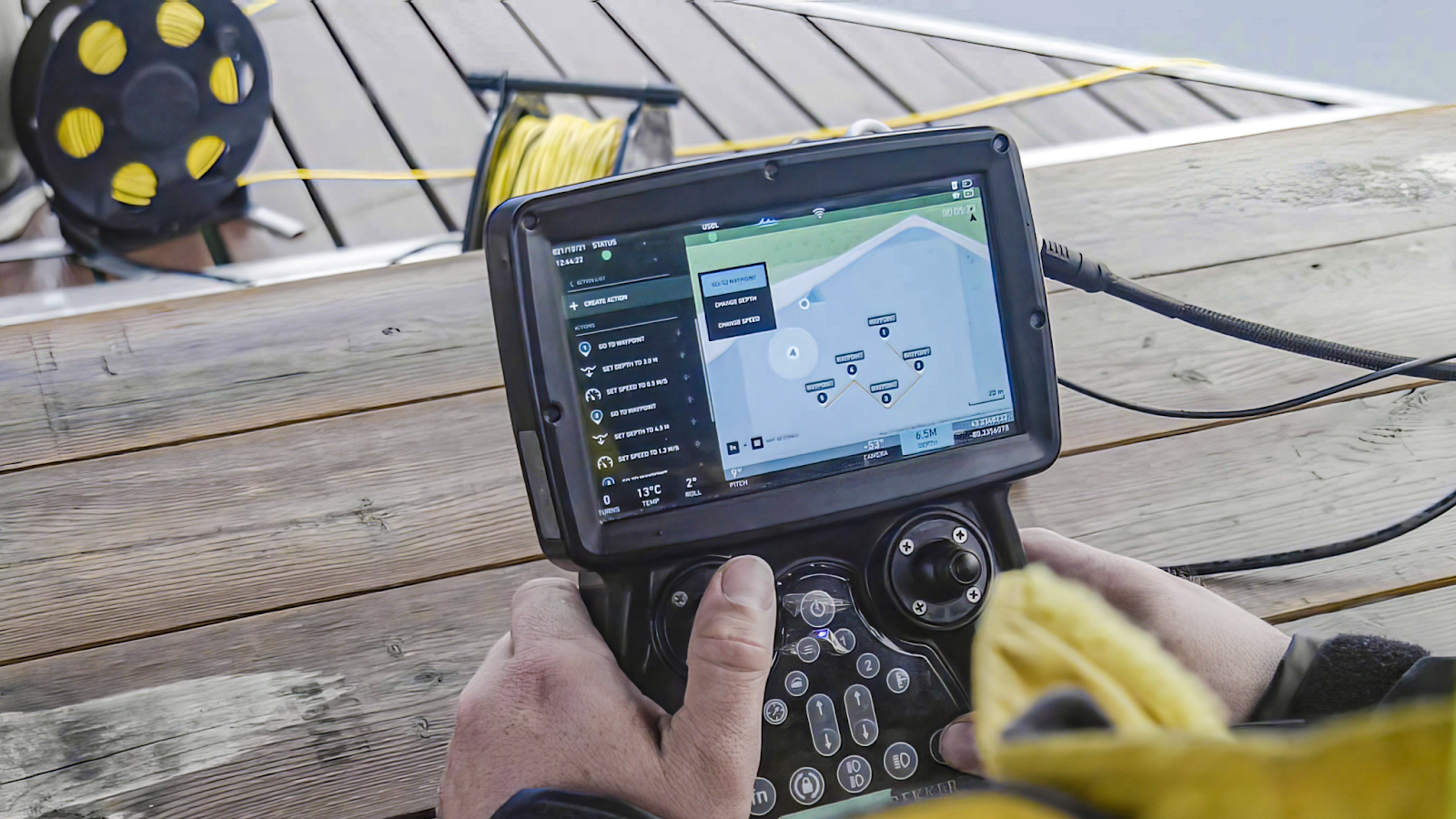Configure Now
Items in Your Cart0
0Items in Your Cart
Start building your packageShop Now
Dead Reckoning navigation, also known as "deduced reckoning," relies on the principle of estimating the current position based on the last known position, velocity, and heading. It involves using the direction and speed of movement to calculate where you are now relative to where you were previously.
Dead Reckoning is particularly useful in scenarios where GPS signals are unreliable or unavailable, such as underwater environments where GPS signals cannot penetrate. This method has been integral to navigation, serving as a reliable means of orientation when other references are unavailable or unreliable.
“Dead reckoning is quickly becoming our new favorite way to operate underwater ROVs and understand positioning of our vehicles,” says Sam Macdonald, President, Deep Trekker. “Setting up USBL or flying completely blind is hard for us as users and our customers. We want to make the piloting experience as easy as possible.”

Discover how Deep Trekker's ROV technology transforms underwater navigation, overcoming traditional challenges in underwater positioning.
Sensors play a significant role in Dead Reckoning by providing essential data inputs for calculating position estimates. Particularly in underwater navigation scenarios with ROVs, characterized by limited visual references, sensors serve as the eyes and ears of the vehicle, capturing crucial information about its movement and surroundings.
Various types of sensors are employed to track different aspects of the vehicle's motion. Doppler Velocity Log (DVL) sensors measure the vehicle's velocity relative to the seafloor by analyzing Doppler shifts in acoustic signals. This data is integral for calculating speed and direction changes, forming the basis of Dead Reckoning calculations. Additionally, Inertial Measurement Unit (IMU) sensors track the vehicle's orientation and angular velocity, providing necessary inputs for maintaining course accuracy.
Advancements in sensor technology, such as miniaturization and improved accuracy, have also enabled more sophisticated Dead Reckoning systems. MEMS (Micro-Electro-Mechanical Systems) sensors, characterized by their compact size and low power consumption, have become increasingly prevalent, offering a perfect blend of performance and efficiency for underwater navigation applications.
By leveraging the capabilities of these sensors, Dead Reckoning systems can navigate with improved precision, overcoming the challenges posed by the underwater environment and enabling safer and more efficient navigation.
Explore advanced underwater navigation tech with Deep Trekker ROVs. Learn about MEMS and FOG IMU, Dead Reckoning, and USBL integration for precise positioning.
While Dead Reckoning serves as a valuable navigation technique, it is not without its challenges and limitations. Understanding these factors is important for mitigating risks and optimizing the performance of Dead Reckoning systems.
One notable challenge is the accumulation of errors over time, often referred to as "dead reckoning drift". This drift can arise from sensor inaccuracies, environmental disturbances, and uncertainties in the vehicle's dynamics. It’s important to note that these errors can compound, leading to considerable deviations from the true position, which is why periodic updates and recalibrations are so critical for maintaining accurate positional data.

Dead Reckoning is also susceptible to disruptions caused by external factors such as ocean currents, water density variations, and submerged obstacles. These dynamic environmental conditions can impede the vehicle's trajectory, making it challenging to maintain accurate position estimates.
Additionally, reliance solely on Dead Reckoning in scenarios with limited external references, amplifies the risk of navigation errors. In such cases, a single miscalculation or sensor malfunction could lead to navigation errors with potentially serious consequences.
Addressing these challenges requires a multi-faceted approach, combining robust sensor technologies, advanced algorithms, and strategic operational practices. By continually refining Dead Reckoning systems and incorporating complementary navigation techniques, such as Deep Trekker’s Sensor Fusion algorithms, operators can navigate with greater confidence and reliability in challenging underwater environments.
Dead Reckoning is a fundamental navigation technique, offering a practical solution for navigating the intricate and often unpredictable underwater terrains encountered by ROVs (remotely operated vehicles) used for underwater operations.
Let us help find the right ROV for your underwater projects and applications
By leveraging known parameters and updating positions in responses to changes in course and speed, Dead Reckoning provides a practical means of estimating positions where traditional navigation aids may be unavailable or impractical.
Its integration with complementary technologies such as acoustic positioning systems enhances its accuracy and robustness, making it a valuable tool for underwater operations and inspection tasks.
As advancements in sensor technology and navigation algorithms continue, Dead Reckoning holds promise as a dependable navigation technique for conducting essential vessel inspections with improved precision and efficiency, even in challenging underwater environments.
Deep Trekker ROVs, engineered with rugged industrial-grade materials, are designed for versatility and durability. They offer immediate deployment and a comprehensive variety of advanced features. These ROVs are highly portable and quick to set up, featuring powerful LED lighting, a live 4K video feed, and up to 360-degree field of view, imaging sonar, and flexible sampling tools.
Our experienced team is at your service to offer expert guidance for a wide spectrum of applications, ranging from inspecting hull vessels to water tanks to conducting underwater assessments across various industries. We ensure tailor-made solutions that precisely match your specific requirements. When you're prepared to acquire your Deep Trekker underwater ROV, don't hesitate to get in touch with us for a personalized quote.
July 30th, 2021
Learn all about remotely operated vehicle pilots: how to become one,...
November 5th, 2024
Learn more about what sonar is and its many uses. Read...
December 23rd, 2021
ROVs and sonar can be used to inspect underwater structures such...